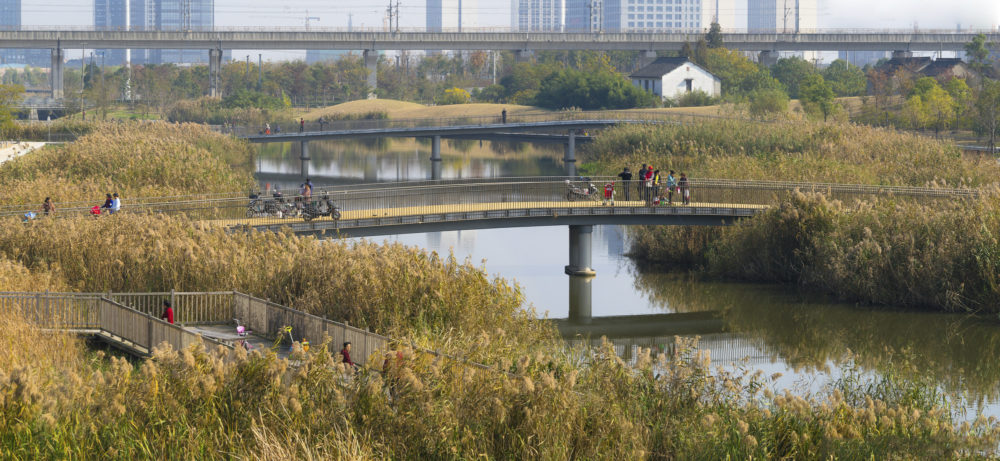
Jiading Central Park
Shanghai, China
 Sasaki
Sasaki
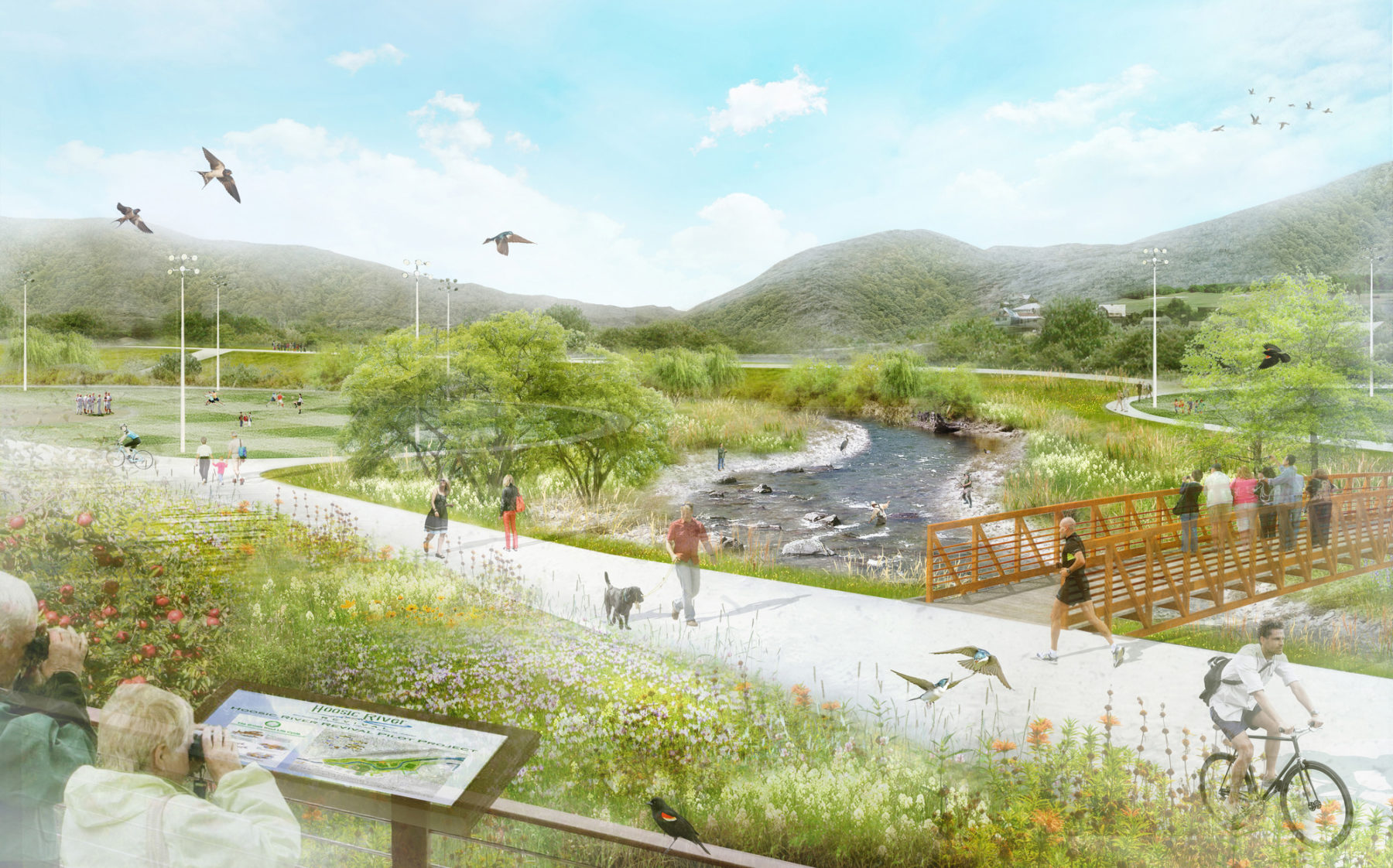
Nestled in the northern edge of The Berkshires, the Hoosic River valley is one of the most scenic regions in Southern New England. The City of North Adams, Massachusetts, like many historic mill towns, was once a thriving industrial center due in part to its location at the confluence of two swiftly flowing rivers. While the North and South Branch of the Hoosic River had historically been an engine behind the city’s economy, these rivers would also flood on occasion and direct flood waters through the city. Given the severity of repeated flood events from the 1920s through the 1940s, the community sought an engineering solution from the U.S. Army Corps of Engineers resulting in 15 foot-high concrete chutes and earthen walls to protect the city from flooding. For over 60 years, their singular function has impaired local riverine ecology and separated the city’s residents from one of their greatest assets.
Home of the largest contemporary art museum in the United States, the Massachusetts Museum of Contemporary Art (MASS MoCA), North Adams has in recent years become a center for tourism, culture, and recreation. However, the river, which flows through downtown, has inhibited the city’s renaissance. Given the advancing age of the chutes, it became time to examine how to restore the river, enhance public access to the water’s edge, and rethink its flood protection strategy. Working with the local community-based non-profit Hoosic River Revival and the Massachusetts Department of Ecological Restoration, Sasaki partnered with the award-winning river restoration firm Inter-Fluve to re-envision the Hoosic River through downtown North Adams and advance the community’s vision toward future implementation.
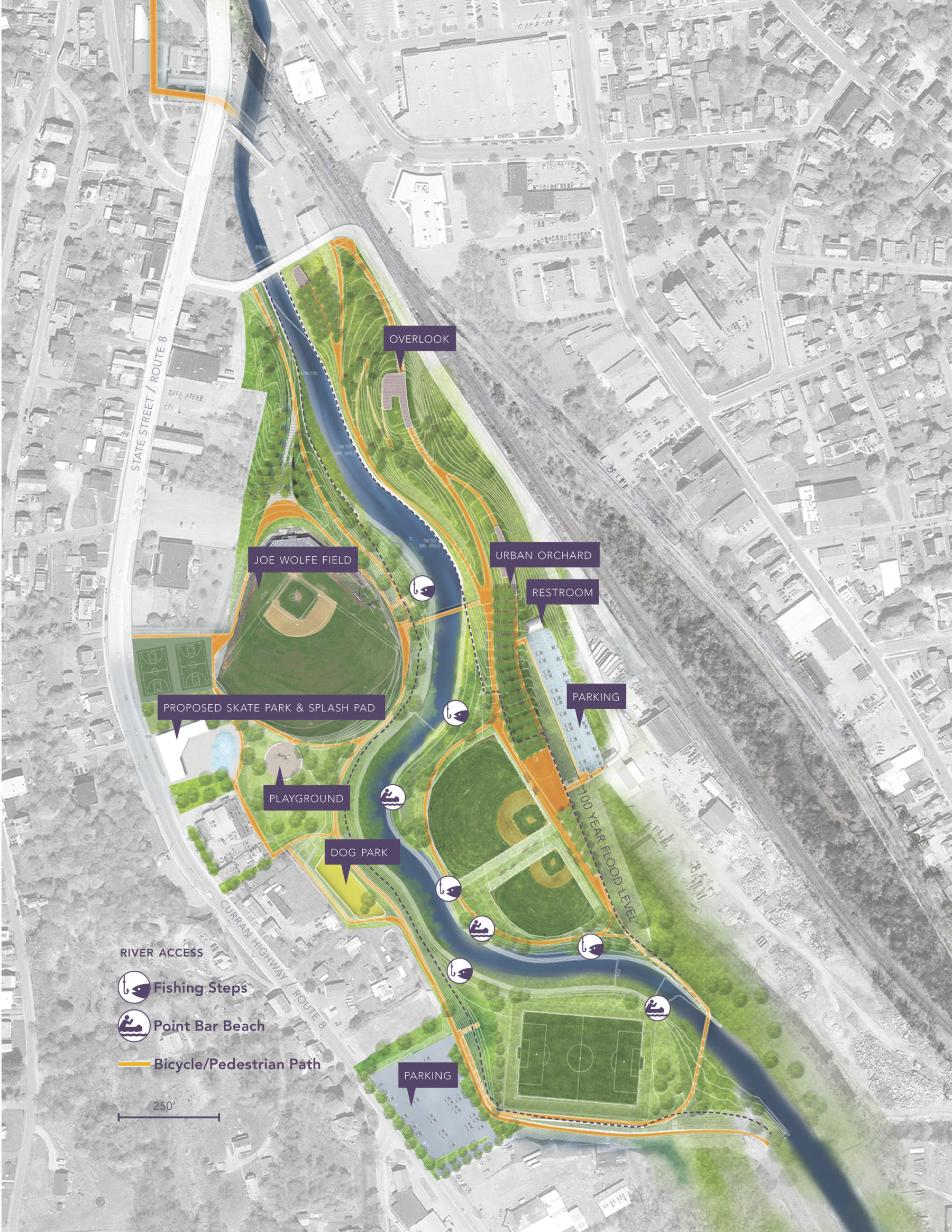
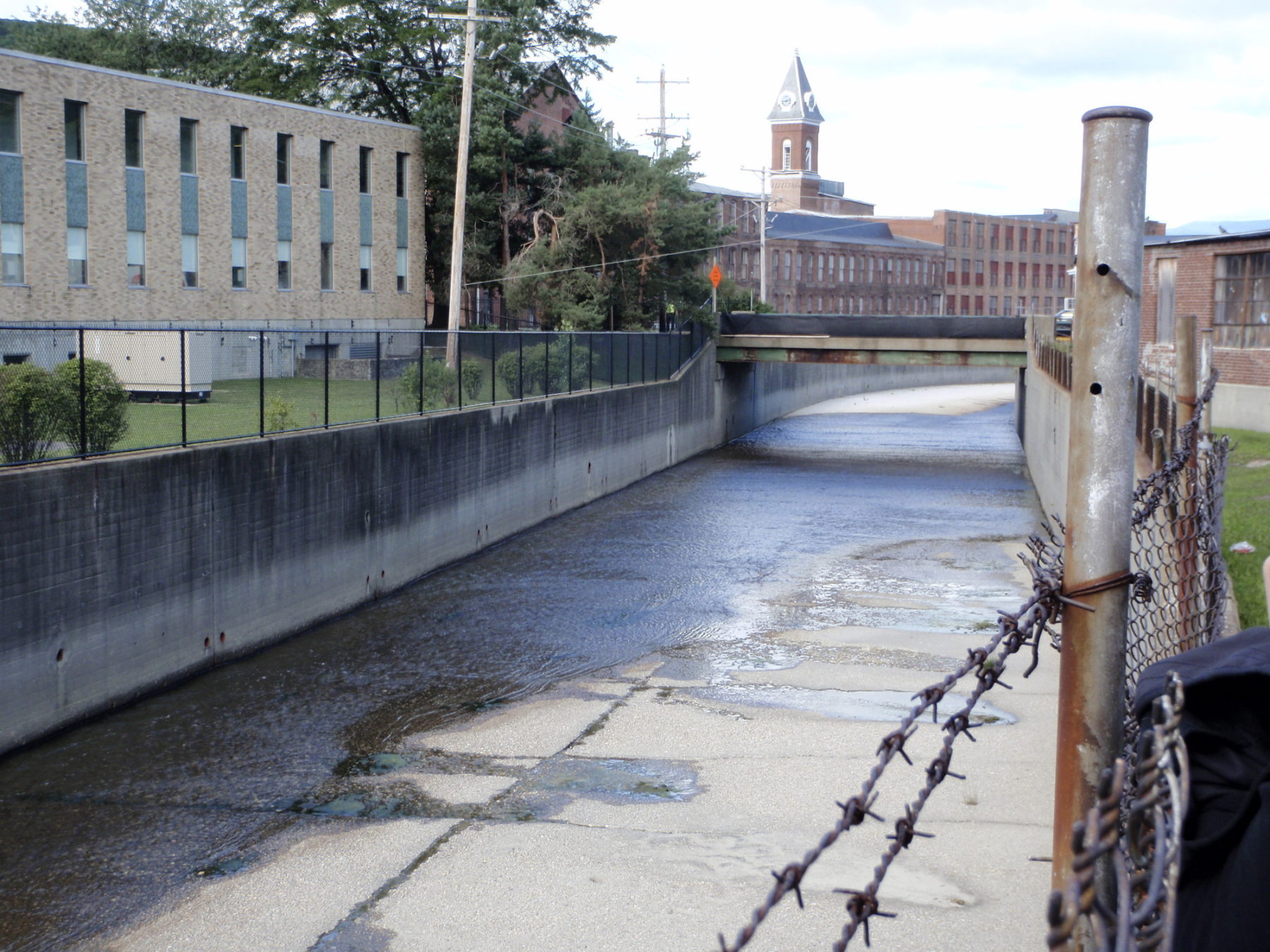
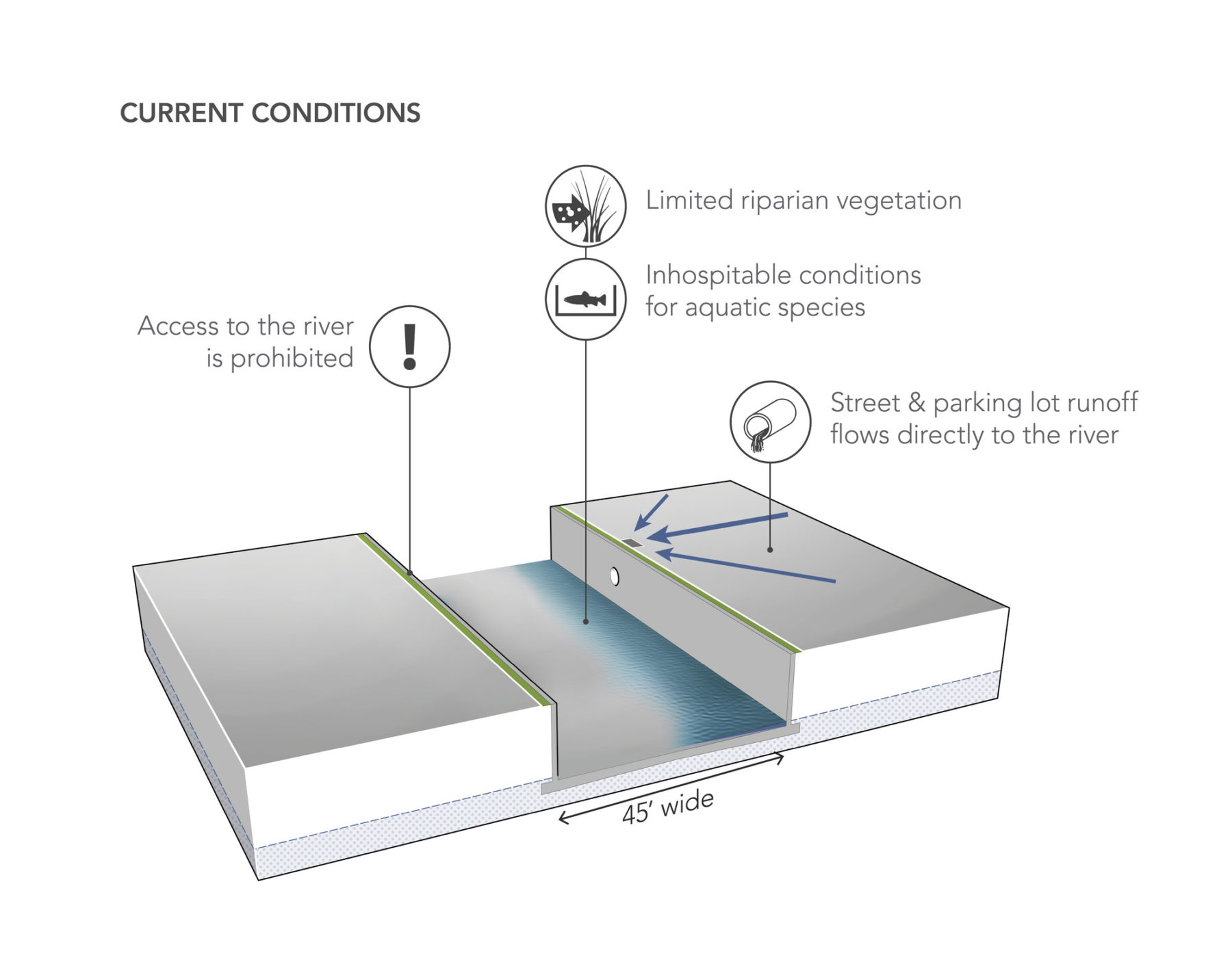
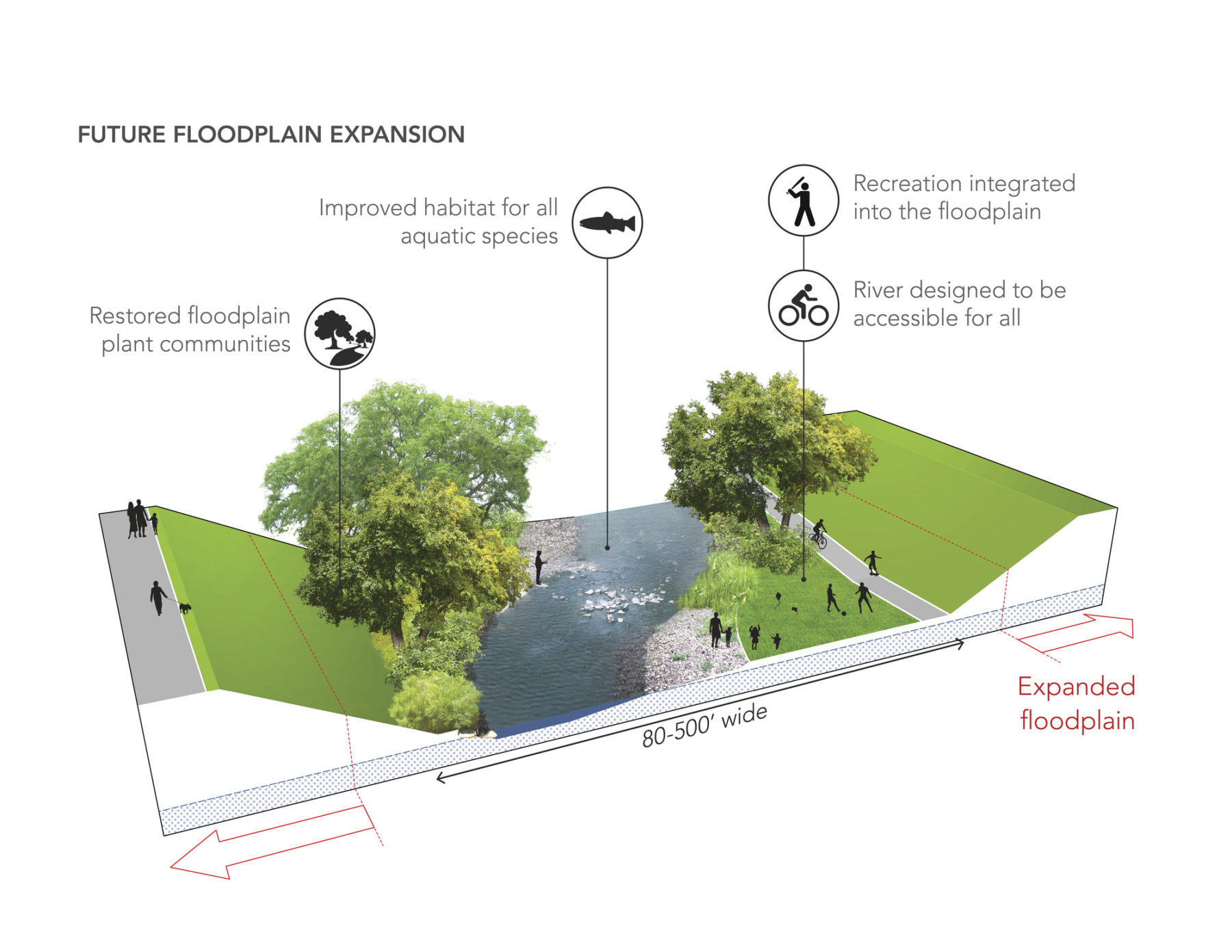
Allowing nature to inform design, our restoration strategies capitalize on natural processes—such as reestablishing the river’s connection to its historic floodplain, providing a natural ‘relief value’ for flood waters, improving the riparian habitat, and enhancing access to the river. Reinvented as a river filled with life, both in the channel and along its banks, the plan includes improved habitats for native cold-water species, like brook and brown trout, reimagined recreational facilities, well-planned paths, and a host of other amenities for residents and visitors. These improvements will transform the area while maintaining or exceeding the existing level of flood protection. Based on more ideal river conditions upstream, the goal of the in-channel restoration is to develop, enhance, and reestablish stable riverine habitats, improve water quality, and restore in-stream connectivity. This strategy results in a design that is largely self-maintaining, reducing overall long-term maintenance costs.
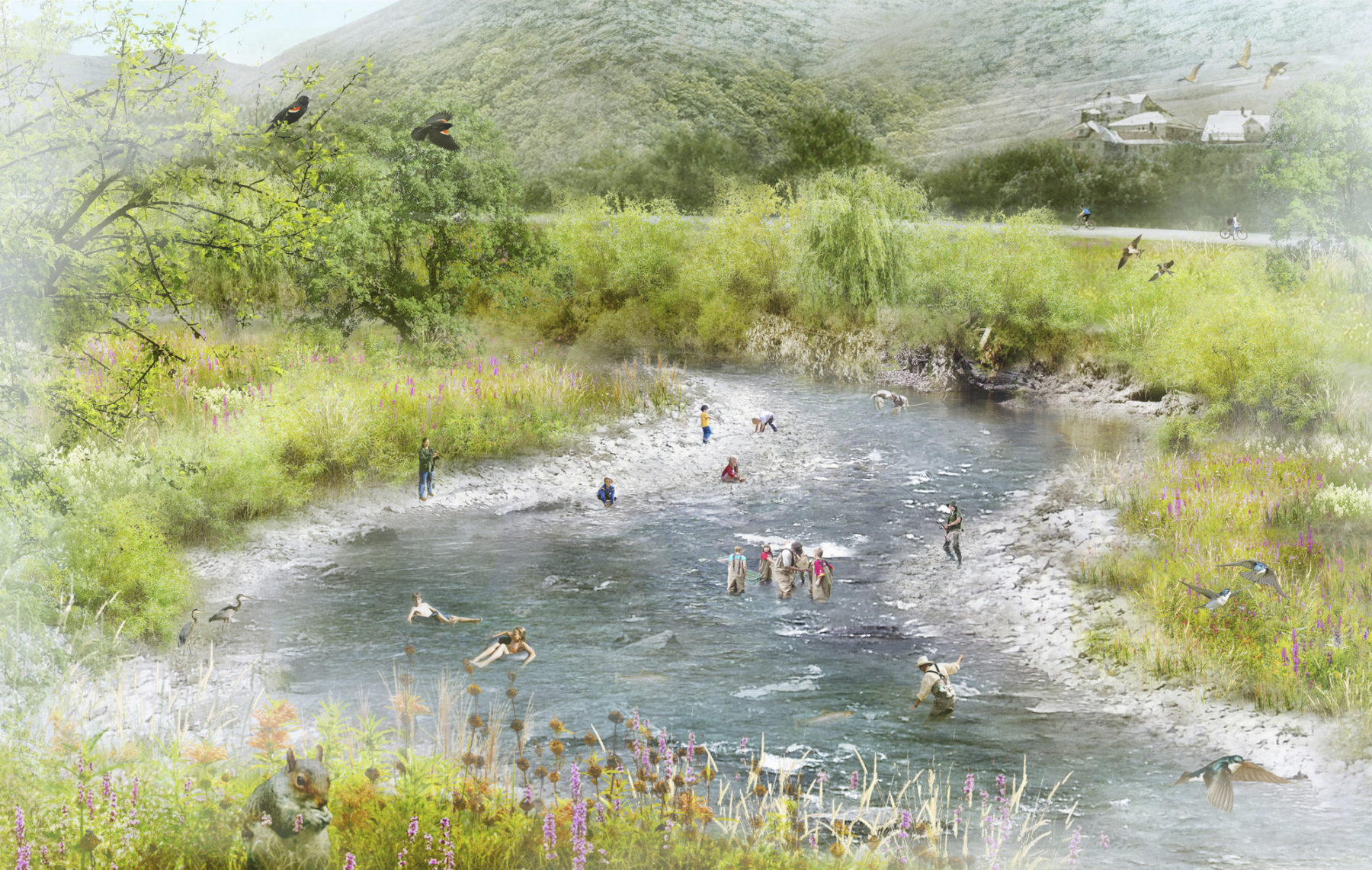
The plan for the initial pilot project is rooted in implementation. With the largest amount of publicly owned land available, and the fewest constraints, existing parkland and several vacant city-owned parcels along the South Branch were selected for the design study and permit drawings. The pilot area incorporates many key elements identified as priorities by the community from earlier conversations held to solicit the ideas and dreams of North Adams’ residents. The plan celebrates the Hoosic River as a connecting feature through the city, improving access between Main Street, MASS MoCA, Heritage State Park, and the Massachusetts College of Liberal Arts campus. The scenic multi-use trail runs north-south along the entire 1.5 mile length of the South Branch, tying into proposed extensions of the Mohawk and Ashuwillticook recreation trails. As part of a greater vision for North Adams, these efforts complement the numerous, on-going planning and redevelopment efforts throughout the city. Since the inception of this project, Hoosic River Revival has been working closely with the U.S. Army Corps of Engineers officials to facilitate the authorization process. Coupled with a thorough design process and hydraulic modeling of each design phase, the river restoration is expected to be completed in 2020.
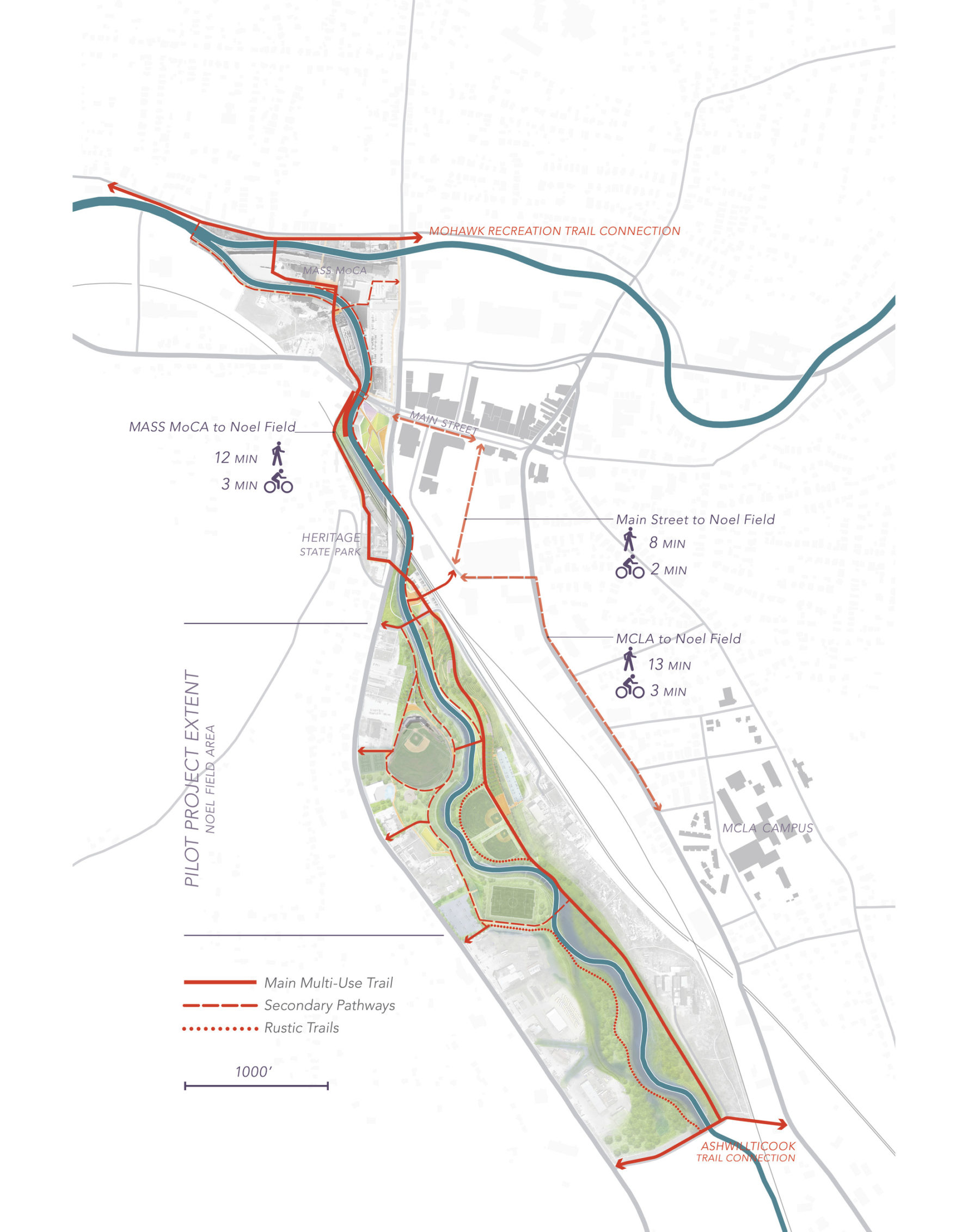
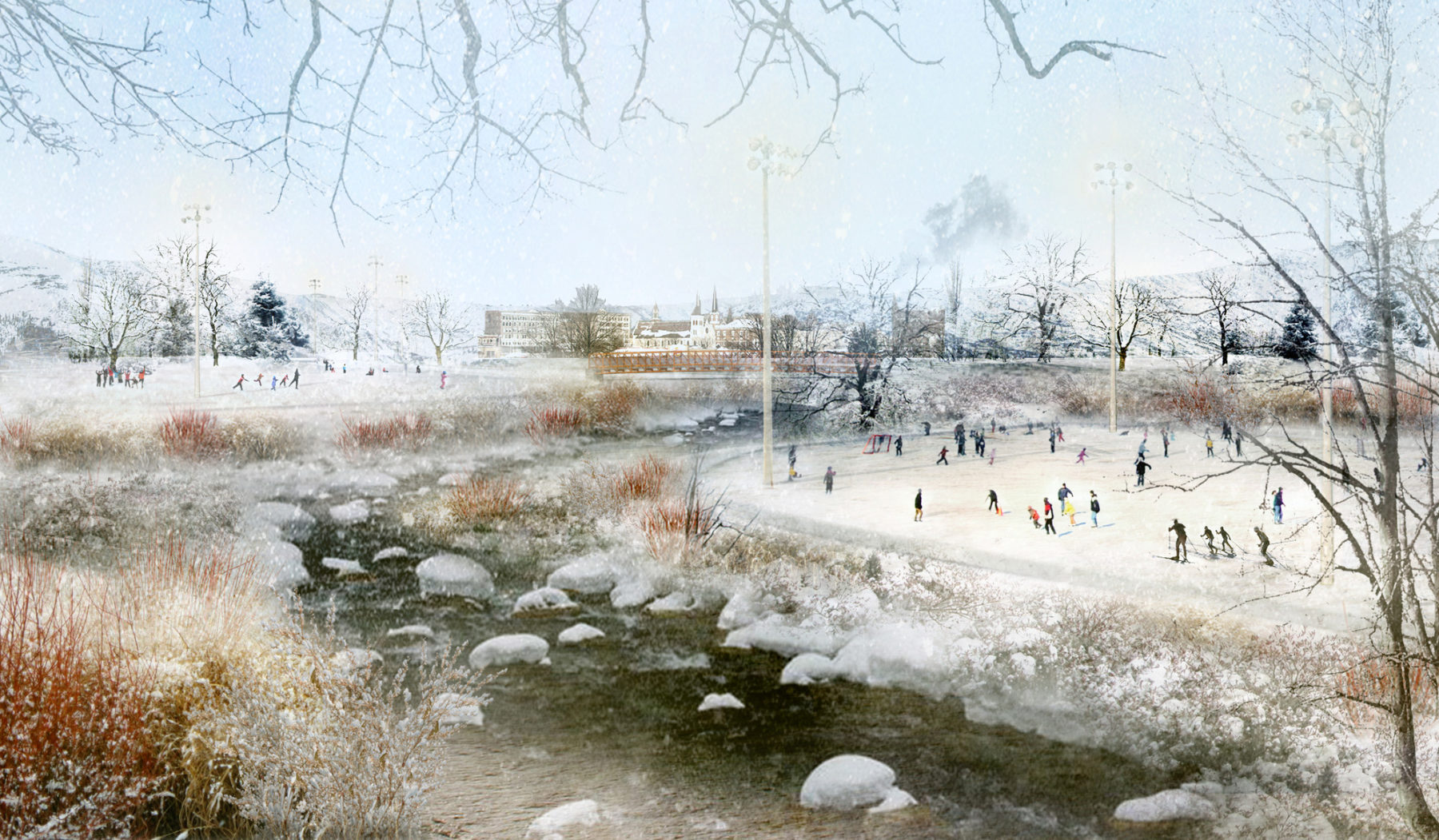
For more information contact Michael Grove.